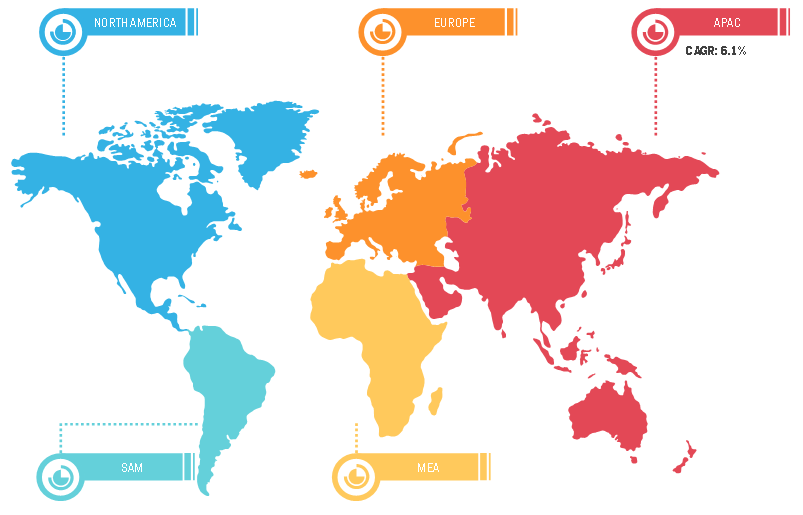Increase in Working Population is going to Escalate Household Vacuum Cleaners Market Growth During 2021–2028
According to our latest market study on “Household Vacuum Cleaners Market Forecast to 2028 – COVID-19 Impact and Global Analysis – by Product (Upright, Stick, Canister, Robotic, Handheld, and Others), Type (Corded and Cordless), and Distribution Channel (Offline and Online)” the market was valued at US$ 41,490.9 million in 2020 and is projected to reach US$ 58,439.6 million by 2028; it is expected to grow at a CAGR of 4.4% from 2021 to 2028. The report highlights key factors driving the market growth and prominent players along with their developments in the market.
Household vacuum cleaner is an electrical household appliance which is used to clean and remove debris from floors, upholstery, draperies, and other surfaces with the use of suction. The household vacuum cleaners are available in various sizes and shapes as well as in different type of models which includes upright, canister, handheld, and robotic, among others. To provide convenience, ease of use and efficient cleaning the household vacuum cleaners are available in cordless making it portable, which can be carried and used for cleaning different areas of the house.
Working professionals prefer vacuum cleaners over manual cleaning to save time and efforts. Rising demand for compact and convenient cleaning tools is a major trend contributing to the progress of the household vacuum cleaner market. Moreover, owing to their ergonomic form, these cleaners have better portability and convenience of use. Household vacuum cleaner variants with greater flexibility can be used to clean cars, pet hair, couches, and rugs. The lack of time available for performing household tasks, including cleaning and organizing, in both in-office and remote working models is bolstering the demand for vacuum cleaners in the residential sector. Further, the rising percentage of women in total workforce in developing countries has added to the demand for the household vacuum cleaners. According to an analysis of labor force statistics by Pew Research Center, based on data from 114 countries from 2010 to 2016, women make up at least 40% of the workforce in more than 80 countries. The median female labor-force participation rate in all of these countries is 45.4%. Therefore, the increase in the working population is supporting the household vacuum cleaners market growth.
BISSELL; Electrolux; Koninklijke Philips N.V.; Stanley Black & Decker, Inc.; Haier Group; Dyson Limited; Eureka Forbes; Groupe SEB; Miele; and Oreck Corporation are among the well-established players operating in the household vacuum cleaners market.
Impact of COVID-19 Pandemic on Household Vacuum Cleaners Market
COVID-19 outbreak pandemic has drastically altered the status of the household vacuum cleaners market. The outbreak has declined operational efficiency and interrupted value chains owing to the sudden closure of national and international boundaries, thereby creating revenue loss and damage. The disruptions in value chain has restricted the supply of raw material, which, in turn, is hindering the growth of the market and affecting the development of the end-use industries. However, as the economies are planning to revive their operations, the demand for household vacuum cleaners is expected to rise globally in coming months. The COVID-19 outbreak has emphasized the significance of cleanliness and hygiene practices among the populace. As per a microlearning course from the European Centre for Disease Prevention and Control, there is an evidence that SARSCoV-2 virus particles can be displaced by air and deposited onto other surfaces. Hence, cleaning of the floors becomes essential. Therefore, Oreck offers handheld and canister vacuum cleaners, which are lightweight, portable, and equipped with powerful and superior suction to tackle messes from room with ease. A few Oreck canister vacuums feature HEPA filtration to capture and trap dust, dirt, and other allergens so that messes cannot get released back into a home. Vacuuming will not eliminate SARS-CoV-2, but it will make it difficult for virus particles to get into the air, where they can be breathed in or transported onto high-touch surfaces. However, vacuuming can still significantly lessen the amount of virus by capturing and retaining debris, dust, and other particles. All these factors are anticipated to bolster the demand for household vacuum cleaners globally in coming years.
Household Vacuum Cleaners Market Breakdown – by Region, 2020

Household Vacuum Cleaners Market Regional Overview by 2028
Download Free Sample
Household Vacuum Cleaners Market Forecast to 2028 - COVID-19 Impact and Global Analysis By Product (Upright, Stick, Canister, Robotic, Handheld, and Others), Type (Corded and Cordless), and Distribution Channel (Offline and Online)
Household Vacuum Cleaners Market Regional Overview by 2028
Download Free SampleHousehold Vacuum Cleaners Market Forecast to 2028 - COVID-19 Impact and Global Analysis By Product (Upright, Stick, Canister, Robotic, Handheld, and Others), Type (Corded and Cordless), and Distribution Channel (Offline and Online)
Household Vacuum Cleaners Market, by Product
- Upright
- Stick
- Canister
- Robotic
- Handheld
- Others
Household Vacuum Cleaners Market, by Type
- Corded
- Cordless
Household Vacuum Cleaners Market, by Distribution Channel
- Offline
- Online
Household Vacuum Cleaners Market, by Geography
- North America
- US
- Canada
- Mexico
- Europe
- Germany
- France
- UK
- Italy
- Russia
- Rest of Europe
- Asia-Pacific (APAC)
- Australia
- China
- India
- Japan
- South Korea
- Rest of Asia-Pacific
- Middle East and Africa (MEA)
- South Africa
- Saudi Arabia
- UAE
- Rest of Middle East and Africa
- South America
- Brazil
- Argentina
- Rest of South America
Contact Us
Phone: +1-646-491-9876
Email Id: sales@theinsightpartners.com